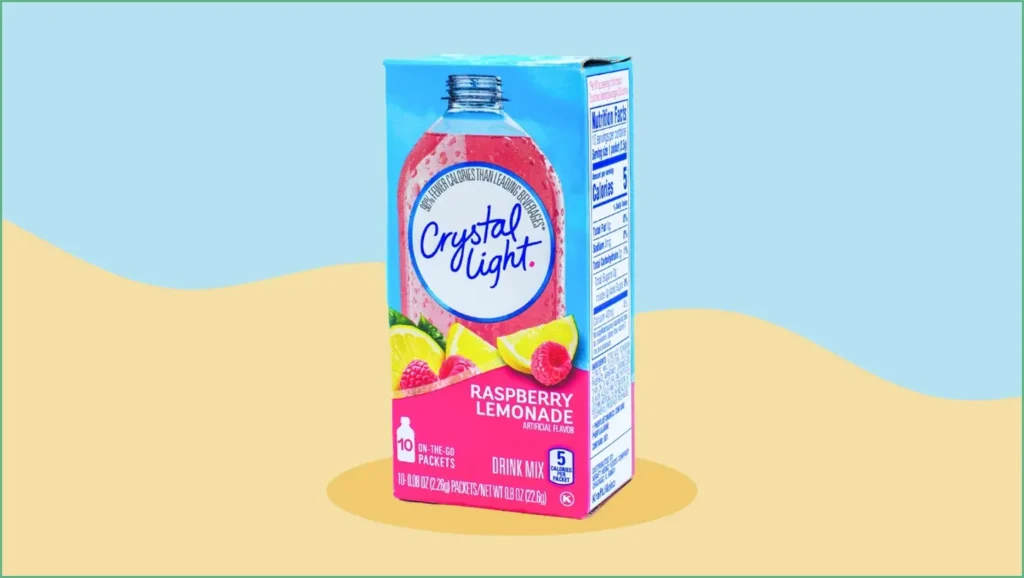Is Crystal Light Healthy? A Clear Look at Ingredients, Risks, and Alternatives
I’ll break down the ingredients and nutrition, weigh the health trade-offs, describe who should be cautious, and offer sensible swap options you can actually use. No fluff, just pragmatic facts to help you decide if Crystal Light fits your habits. Read on for a neutral, straightforward take.
Ingredients and Nutrition
Crystal Light mixes are built around a handful of common food additives: citric acid, potassium citrate, maltodextrin, calcium phosphate, and acesulfame potassium, plus artificial sweeteners like sucralose or aspartame in many varieties. Some mixes also include small amounts of natural and artificial flavors, soy lecithin, acacia gum, potassium sorbate, and artificial colors like Yellow 5, Red 40, and Blue 1. Most of these ingredients are approved as safe by food regulators, and the product is overwhelmingly low calorie with half a packet delivering roughly 5 calories and essentially no fat, protein, fiber, or sugar.
Nutritionally, Crystal Light contributes almost nothing beyond water and flavor: zero grams of sugar, negligible carbs, and minimal sodium in a typical serving. That makes it a functional tool for flavoring water without adding calories or sugar. If your goal is to reduce beverage calories, it does that job well.
Does It Help with Weight Management?
Replacing soda, juice, or other sugar-heavy drinks with Crystal Light can cut calories and make weight loss easier when paired with an overall calorie-conscious diet. It also makes drinking water more appealing for people who dislike plain water, which can help with hydration and stop thirst from being mistaken for hunger. On the flip side, habitually drinking intensely sweet, zero-calorie beverages may change taste preferences and lead some people to eat more calorie-dense foods.
“Crystal Light is also so sweet that your palate may get used to the super sweetness, causing you to crave sweet foods,” Young adds. That observation reflects a behavioral risk rather than a direct metabolic effect of the beverage itself.
Safety Concerns: Sweeteners and Colors
Two categories draw the most attention: artificial sweeteners and artificial colors. Regulators consider ingredients like aspartame and sucralose to be safe for general consumption, but research is ongoing and sometimes mixed on longer term effects and subtle metabolic or behavioral links.
Artificial colors are also deemed safe for most people, though a small subset may experience allergic reactions or sensitivities to certain dyes. Some studies have explored connections between dyes and behavioral issues in children, but consensus is not settled and experts note that only a fraction of kids appear sensitive to these additives.
Reported Side Effects and Who Should Be Careful
Most people experience no obvious side effects from occasional Crystal Light use beyond a possible artificial aftertaste. However, artificial sweeteners have been linked in studies to headache reports and mood changes in some individuals, and dyes can cause allergic reactions in rare cases. People with specific health conditions should be more cautious.
Those with phenylketonuria must avoid products with aspartame because it contains phenylalanine, which they cannot metabolize safely. The Mayo Clinic recommends limiting aspartame if you have tardive dyskinesia, sleep disorders, anxiety, or if you are taking certain medications that interact adversely with the compound.
People managing diabetes can use many sugar substitutes because they do not raise blood sugar, but individual responses vary and some research has suggested sucralose might reduce insulin sensitivity in certain contexts. Pregnant people should be mindful: evidence on artificial sweeteners and pregnancy outcomes is still incomplete and a few studies have raised concerns worth discussing with a clinician.
Special Diets: Keto, Fasting, and Kidney Health
For keto followers, Crystal Light’s near-zero carbs and sugars make it broadly compatible, but personal tolerance matters because some users report headaches tied to artificial sweeteners. During fasting, many people use zero-calorie flavored drinks to make it easier; small studies suggest they don’t necessarily increase intake of other drinks, but more research is needed. For individuals with kidney disease, Crystal Light is often recommended as a preferable alternative to sugary drinks because it promotes hydration without adding sugars that can harm metabolic health.
Alternatives Worth Considering
If you want to avoid artificial ingredients while keeping flavor, there are several simple options that add nutrients or natural flavor without the controversy. Try flavored sparkling water, coconut water, kombucha, or homemade fruit-infused water made with fresh berries, citrus, or herbs and a touch of erythritol or simple stevia syrup for sweetness. These alternatives can provide vitamins, probiotics, or electrolytes that Crystal Light does not.
For those who like Crystal Light but want fewer additives, there are product lines that replace artificial sweeteners with sugar, dried corn syrup, and stevia leaf extract; these may be a middle ground for people seeking more natural ingredient lists. Ultimately, whether Crystal Light is a good choice comes down to your health goals, sensitivity to additives, and how it fits into your broader eating pattern.
Use Crystal Light as a practical tool for cutting beverage calories and improving hydration habits, but pay attention to how it affects your cravings and overall diet. If you notice headaches, mood shifts, increased sweet cravings, or digestive sensitivities, consider swapping to a cleaner, nutrient-providing option. Small, consistent choices about what you drink add up over time, so pick the approach that helps you stay hydrated and satisfied without undermining your bigger health goals.
n
h/t: Everyday Health
n
